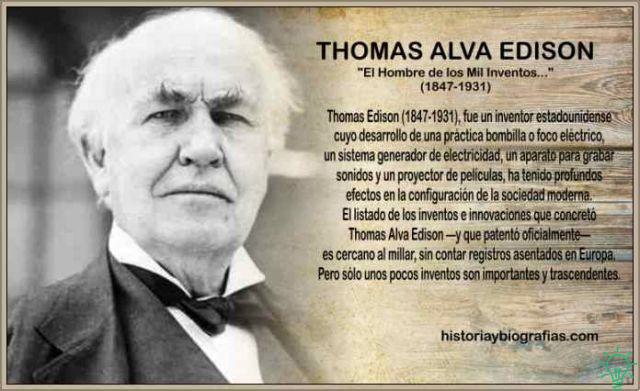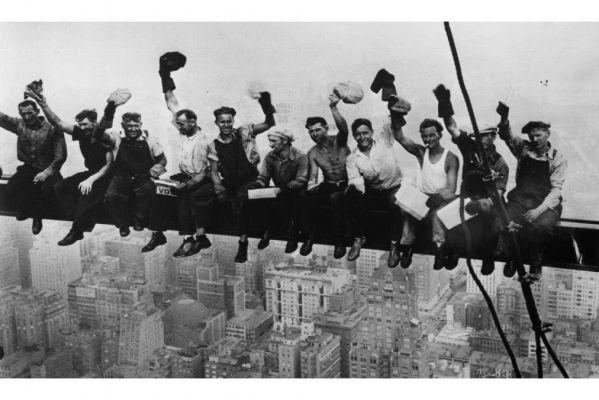
Are you looking for more information about motivational theories? Are you lost in a myriad of names and can't figure out which ones are the main ones?
Well, in this article I will present you what are the most important motivational theories, also giving you a categorization based on the approach that the creators followed in creating them.
But first of all, I need to explain to you once and for all what is meant by motivational theory.
What is a motivational theory?
A motivational theory aims to formulate hypotheses about i reasons that guide human behavior. This is a topic that has been studied extensively by psychologists, as it has a number of consequences in many social contexts.
Knowing this information is important in areas, for example, such as the work, where there is an interest in making employees more productive, while reducing the resources used and also guaranteeing greater worker satisfaction (job satisfaction).
As I have already told you in other articles (for example this one), the term motivation can be thought of as the composition of two words: reasons e action. Furthermore, this term derives directly from the Latin “movere”, still giving that idea of movement.
What is important to underline is that to date there is no universally accepted motivational theory. There are some certainly more famous than others, but there is no unanimity on recognizing the validity of one theory rather than another.
The history of motivational theories
Contrary to popular belief, the origin of the term motivation is quite recent. Indeed, this word alone has begun to be used in the early twentieth century, precisely at the birth of the first motivational theories.
In the table below I present to you in chronological order the succession of motivational theories from the beginning of the twentieth century, until almost today., For which they have been translated; others I have deliberately left in English.
| Motivational theory | Creator | Year |
| Law of effect | Thorndike | 1905 |
| Teoria drive-reduction | Hull | 1943 |
| Reinforcement theory | Skinner | 1948 |
| Hierarchy of needs | Maslow | 1954 |
| Two-factor theory | Herzberg | 1959 |
| Theory X and Theory Y | McGregor | 1960 |
| Achievement theory | McClelland | 1961 |
| Equity theory | Adams | 1963 |
| Expectation theory | Vroom | 1964 |
| Expectation theory | Porter & Lawler | 1968 |
| Teoria del goal setting | Locke & Latham | 1968 |
| Teoria ERG | Aldelfer | 1969 |
| Job Characteristics Model (JCM) | Hackman & Oldham | 1975 |
| Motivation Calculus | mobile | 1976 |
| Social learning theory | Bandura | 1977 |
| Self-determination theory | So & Ryan | 1985 |
| Achievement Goal Theory | N | 1989 |
| Motivational climate theory | Ames | 1992 |
| Social Goal Theory | Urdan & Maher | 1995 |
| Hierarchical model of intrinsic and extrinsic motivation | Vallerand | 1997 |
| The trichotomic theory of objectives | Elliot | 1999 |
| The implicit theory of skill | Dweck | 1999 |
| The motivational atmosphere | Keegan et al | 2010 |
| The theory of progress | Amabile & Kramer | 2011 |
The 2 main types of motivational theories
Despite the differences between the various motivational theories, it is possible to identify two main categories, based on the approach that the creators followed in formulating them.
They are distinguished in theories based on the content and theories based on process.
Content-based theories focus on thing pushes man to act; in other words on what are the psychological levers, the reasons, which guide human behavior.
The others, on the other hand, argue like, or how, one can motivate an individual. In this case the fulcrum of the whole theory revolves around the ways in which to recreate a state of motivation and then apply it to various contexts.
The most important content-based theories were formulated earlier than the others and are also called theories of needs.
Before moving on to the discussion of the most important motivational theories, I still want to clarify that none of these provide a complete explanation of the phenomenon, but it can be the basis for the development of techniques aimed at motivating people.
The 8 most relevant motivational theories
Here I will discuss the most important motivational theories for each category.
For based theories on the content: Maslow's hierarchy of needs, McClelland's theory of achievement (or needs), Aldelfer's ERG theory, Herzberg's two-factor theory.
For based theories on the process: Skinner's theory of reinforcement, Vroom's theory of expectation, Adams' theory of equity and Locke & Latham's theory of goal setting.
1. Maslow's hierarchy of needs
Abraham Maslow's hierarchy of needs certainly represents motivational theory more famous. From a chronological point of view it was officially proposed in 1954, even if the American psychologist continued to work on it in the following decades, so much so that in the seventies he presented an updated and more complete version.
Maslow's main belief in exposing the model is: people are motivated in life a meet their needs, and some of these take precedence over others.
In the original version, this theory is based on a model a five stages, graphically represented by the famous pyramid.
At the base of the pyramid of needs we find what are called i basic needs. These are all those needs that serve to guarantee our survival: oxygen to breathe, food, water, sleep represent some examples of needs that fall within the first level.
In the second step of the ladder of needs we find the need for safety. It starts with personal safety, i.e. the need for a safe place to live, to staying healthy or having a good job.
At the third level of Maslow's pyramid are the social needs. They include the need to have relationships of friendship, of an intimate nature and in general with other people.
At the fourth level is the need to be appreciated and respected by others, that is, the need for others recognize our value.
At the last step of Maslow's pyramid we find theself-realization, defined as the complete use and exploitation of one's talents, abilities and potential.
2. McClelland's theory of achievement
Direct extension of the one previously treated, the achievement theory (or of the three needs) of David McClelland was formulated in 1961.
According to the American psychologist, it is possible to identify three basic needs that guide human behavior. Among them, it is possible in turn to identify one predominant.
What are these three needs?
According to the motivational theory of achievement these are the main needs that guide human behavior:
- Affiliation
- Power
- Success
Il need affiliation it is man's need to build and cultivate depths interpersonal relationships. In other words, it is about wanting to be part of a community and contributing to the common good.
Il need for power is the will on the part of an individual to have theauthority and control on others, to be recognized as a valuable leader. People in whom this need is felt want to be in charge of others, influencing their needs and wants.
Il need for success it is the will on the part of man to fulfill himself and to succeed in the activities he carries out. It contrasts with the concept of failure and takes on particular relevance when it comes to concepts related to achievement of their goals.
3. Aldelfer's ERG theory
US psychologist Clayton Aldelfer further developed the principles expressed in Maslow's theory, proposing his ERG theory in the 1969. He goes to reduce Maslow's categories of needs, bringing them from a number of five to a number of three:
- Needs of Existence (Existence)
- Correlation Needs (Relatedness)
- Growth Needs (Growth)
The three categories of needs according to the ERG theory
I needs of existence they include all psychological and material desires. They range from survival needs (food, water, air, etc.) to security needs. In practice they represent the first two levels of Maslow's pyramid.
I correlation needs they concern the esteem of other people, the need to have meaningful relationships with others, such as family, friends or co-workers. They also include the need to be recognized and respected by others. In practice the third and part of the fourth level of Maslow's theory.
I growth needs they take a closer look at concepts such as self-esteem and self-realization, needs that lead an individual to want to get the most out of himself. Fourth and fifth levels of the Maslow scale.
According to Alderfer these three categories differ in terms of concreteness. THE needs of existencein fact, they are the most concrete and also the most easily verifiable. THE correlation needs they are less concrete than the previous ones, as they depend on the relationships between two or more individuals. THE growth needsfinally, they are the least concrete, as they are very specific, depending on the uniqueness of each person.
How the various categories of needs relate to each other
Let's try to clarify how the passage from one category of needs to the next and vice versa occurs. In this sense, it is possible to identify three types of interactions:
- Satisfaction-progress: while in Maslow it is necessary to satisfy the needs located in the lower levels in order for those located higher up to appear, this is not mandatory in the ERG theory. Nevertheless, satisfying a particular need can lead the individual to progress towards less and less concrete needs;
- Frustration-regress: if a higher located need remains unfulfilled, a person may regress to lower levels, which seem easier to satisfy;
- Satisfaction-empowerment: indicates that an already satisfied need can maintain its satisfaction, or reinforce one located lower in case the gratification of those placed higher fails.
4. Herzberg's two-factor theory
Frederick Herzberg's two-factor theory was born in 1959 as a result of research conducted in the working world. The American psychologist was interested in clarifying what were the elements that guarantee satisfaction in the world of work.
By carrying out surveys among workers, he realized that the way these people approach the answers concerning what favors satisfaction is very different from that inherent in the world ofdissatisfaction.
So he came to the conclusion that there are two main categories of factors to consider, each completely distinct from the other:
- Motivating factors for satisfaction
- Hygienic factors for dissatisfaction
To fully understand this theory it is important to make this clarification: for Herzberg the concepts of satisfaction and dissatisfaction are completely separate. It does not happen that by denying dissatisfaction you get satisfaction and vice versa.
In other words, it is not enough to work on hygienic factors, minimizing dissatisfaction, for the worker to be motivated. Both factors need to be addressed.
Here's how to act ondissatisfaction in the working world, fighting hygienic factors:
- Update and correct bad company policies
- Provide effective and not too intrusive supervision
- Create and support a culture of respect and dignity for all team members
- Make sure wages are competitive
- Ensure that the worker perceives the importance of the job performed
- Strive to ensure safety at work
Now let's see how to act on the motivating factors to generate the satisfaction at work:
- Give workers the opportunity to achieve great results
- Recognize when an employee has done a good job
- Create a fulfilling job that identifies with the skills of each team member
- Provide opportunities for advancement through internal promotions
- Offer the possibility of training, in such a way as to guarantee the development and growth of each individual
Knowing Herzberg's theory in depth is fundamental in managing groups of people in the workplace and business, in order to create a healthy and successful environment.
5. Skinner's theory of reinforcement
The theory of reinforcement was formulated in 1948 by another American psychologist, Burrhus Frederic Skinner, on the basis of Thorndike's law of effect.
All Skinner's formulation is based on the principle of operant conditioning: human behavior is based on the consequences that derive from certain behaviors. If an action leads to positive consequences, then the person will try to repeat it; on the other hand, if the effects are negative, it will try not to repeat the same mistakes.
Taking a very concrete example, the dog training method is based on this principle: if the animal does what the trainer wants, then it will receive a biscuit in return. The dog's behavior is in this sense influenced by the positive consequences it will have by behaving according to the will of man.
Specifically, Skinner found three types of factors that can be the cause of a behavior:
- Area neutral: responses from the environment that neither increase nor decrease the likelihood that a behavior will repeat itself
- Area reinforcing: responses from the environment that increase the likelihood of repetition of a behavior. They can be both positive and negative elements
- Area punitive: responses from the environment that decrease the probability that a behavior will repeat itself. They counteract the propensity to do something
From these agents Skinner deduced that there may be three main case studies that leverage human behavior:
- Positive reinforcement
- Negative reinforcement
- Punishment
Il positive reinforcement it happens when a positive consequence is guaranteed if you behave in a certain way. For example, if you do your homework, your parents will give you a treat.
Il negative reinforcementInstead, it happens when a negative consequence is posed if something is not done. For example, if you don't clean your room, you will be punished by your parents.
La punishmentinstead, it is the opposite of reinforcement. If you behave in a certain way, you will have negative consequences. For example, driving under the influence of alcohol will result in your driving license suspended.
6. Vroom's theory of expectation
La expectation theory (1964) by Canadian psychology professor Vicor Vroom goes to consider three main factors underlying the motivation:
In particular, the motivation is calculated as follows:
Motivation = Expectation x Instrumentality x Valence
So let's try to clarify the meaning of each of these three factors.
Expectation
Expectation is the judgment that the individual makes about the probability of achieve a certain result through the use of some effort.
Contributing to this factor are various elements: how much you believe in your potential, the level of skills you have and the amount of support you think you have.
Instrumentality
Instrumentality is the belief that a person will receive one reward in exchange for a performance of a certain value. This reward can come in the form of a pay raise, promotion, recognition, or sense of accomplishment.
Instrumentality is low when the reward is the same for any level of performance.
valence
Finally, the value is theimportance which is given to the achievement of a certain objective.
This directly depends on the person's scale of values and on what the latter would like to achieve in life.
Application of Vroom's motivational theory
This theory finds application both in the world of work and in the context of achieving personal goals. In particular, it is interesting to see its use in relation to the financial bonuses given to workers in a corporate context.
Vroom's theory tells us that the employee changes theirs level of commitment according to the value he attributes to the prize and how strong he considers the relationship between his effort and the economic result he obtains.
In this case, if even only one of these options is true:
- More effort will not improve my performance
- A better performance will not increase my premium
- I do not attach any value to the reward I will receive
Then the worker will not be motivated. All three conditions must be false for there to be motivation.
The same principles can be applied to your personal goals, albeit with some adaptations: in this case the prize is the fulfillment of your dreams.
7. Adams's theory of equity
The theory of equity was formulated by behavioral psychologist John Stacy Adams in 1963. Like Herzberg's theory, it is a motivational theory dedicated to the world of work.
The equity theory states that the worker becomes unmotivated, both towards the profession and the employer, if he perceives that input which gives surpasses output that receives. Other consequences that can happen are a reduction in commitment and a sense of discontent on the part of the worker.
In other words, it is a theory that aims to find the elements on which to act to improve the satisfaction of individuals in the world of work.
Possible examples of inputs:
- Effort
- Loyalty
- Hard work
- Commitment
- Ability
- Adaptability
- Flexibility
- Acceptance of others
- Determination
- Enthusiasm
- Trust in superiors
- Personal sacrifice
Possible examples instead of output:
- Financial reward (salary, benefits)
- Recognition of one's worth by others
- Reputation
- Reliability
- Sense of accomplishment
- stimuli
- Sense of growth and advancement
- Job security
In essence, Adams' theory of equity states that the worker is motivated when the inputs he provides and the outputs he receives are on par and balanced.
8. Locke & Latham's theory of goal setting
This theory, a real revelation, was presented by Edwin Locke and Gary Latham in 1968. The whole reasoning of the creators revolves around the power of establishing specific and measurable objectives, depending on the achievement of certain goals.
This speech nowadays can be quite natural, but for example the introduction of KPIs (Keyword Pperformance Indicators) in the world of work (and not only) is due precisely to this theory, which revolutionized the way of thinking at the time.
Locke also demonstrated that the best way to feel motivated is by making an effort to do something you're not 100% sure you can achieve. In this way there is the possibility to overcome one's limits and to feel even more fulfilled.
Locke's five principles in goal setting are:
- Clarity: the clearer your goal, the greater the chances of being able to achieve it effectively
- Challenge: an easy or boring goal is demotivating. But it is also important not to overdo the difficulty of the objectives
- Commitment: the secret to achieving a goal is to fully understand the benefits that you will have from achieving it and commit yourself day after day to achieving it
- Control: periodically you will have to monitor the progress you have made towards your goal. This can only be done if your goal is measurable
- Complexity: it is important to divide a large objective into many micro-objectives in order to reduce the difficulty and avoid possible deadlock situations.





















